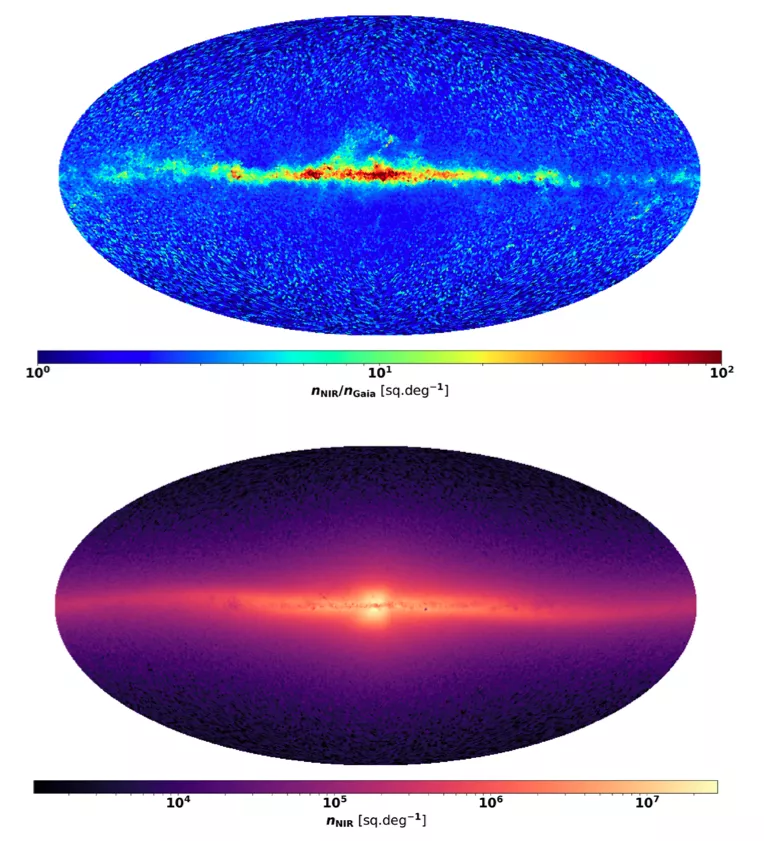Science Cases
There are three main science challenges for a new all-sky astrometry mission:
1. Peering through the dust:
NIR astrometry (and simultaneous photometry) is crucial for penetrating obscured regions and for observing intrinsically red objects when implemented with sufficient accuracy. Peering through the dust of the Milky Way to obtain a dense sampling of the phase space is necessary to properly study the bulge, bar, bar-disc interface and spiral arms. Spiral structure can excite stars to radially migrate and induce disc heating and accurate measurements of the 3-D motion and properties of these obscured stars are needed to trace the dynamical history and evolution of our Galaxy.
Preliminary estimates show that a new NIR astrometry mission would observe at least 5 times as many stars as Gaia, assuming the same magnitude range, giving a huge increase in the catalogue size and would dramatically increase phase space sampling of the disc, especially of the innermost regions where co-existing populations require better statistics.
2. Extending the baseline:
A new mission could be combined with the older Gaia catalogue (projected to be ∼ 2 billion sources) with a 20 year interval to give a much longer baseline of 25– 35 years, with very accurate proper motions (a factor of 14–20 better in the two components) and improved parallaxes needed to measure larger distances. Dynamical studies in all of the outer halo would give an enormous sample and greatly enhance the resolving of tangential motions in streams and local dwarf galaxies, with a potential accuracy of 2–3 km s−1 for samples out to ∼100 kpc. This will provide great insight into the gravitational potential in the outer reaches of the Milky Way where halo streams are sensitive probes.
Proper motions will also allow the study of massive local group galaxies (for instance Cen-A). At the same time the parallaxes, especially of binaries, will be much improved when astrometric data from two missions are combined and the detection of planets with significantly longer periods than by Gaia alone can be achieved. A significant population of stars with planetary system architectures similar to our Sun’s (i.e. long period, massive gas giants, like Jupiter and Saturn, in the outer reaches, shielding Earth type planets in the star’s habitable zone) will be discovered.
3. The Celestial Reference Frame:
A new mission would allow the slowly degrading accuracy of the Gaia visible reference frame, which will become the fundamental Celestial Reference Frame and the basis for all modern astronomical measurements, to be re-initialised back to a maximal precision. This degradation is due to errors in its spin and due to small proper motion patterns which are not accounted for.
The Gaia catalogue accuracy itself will decay more rapidly due to errors in the measured proper motions. Dense and accurate reference grids are needed for forthcoming giant telescopes but also for smaller instruments currently operating or being planned.
The extension of this visible reference frame into the NIR is an important step given that so many new space and ground based observatories will have infrared sensitive instruments. A new mission would provide better accuracy to explore proper motion patterns (e.g. from the Sun’s Galactic acceleration and gravitational waves), real time cosmology and fundamental physics.


